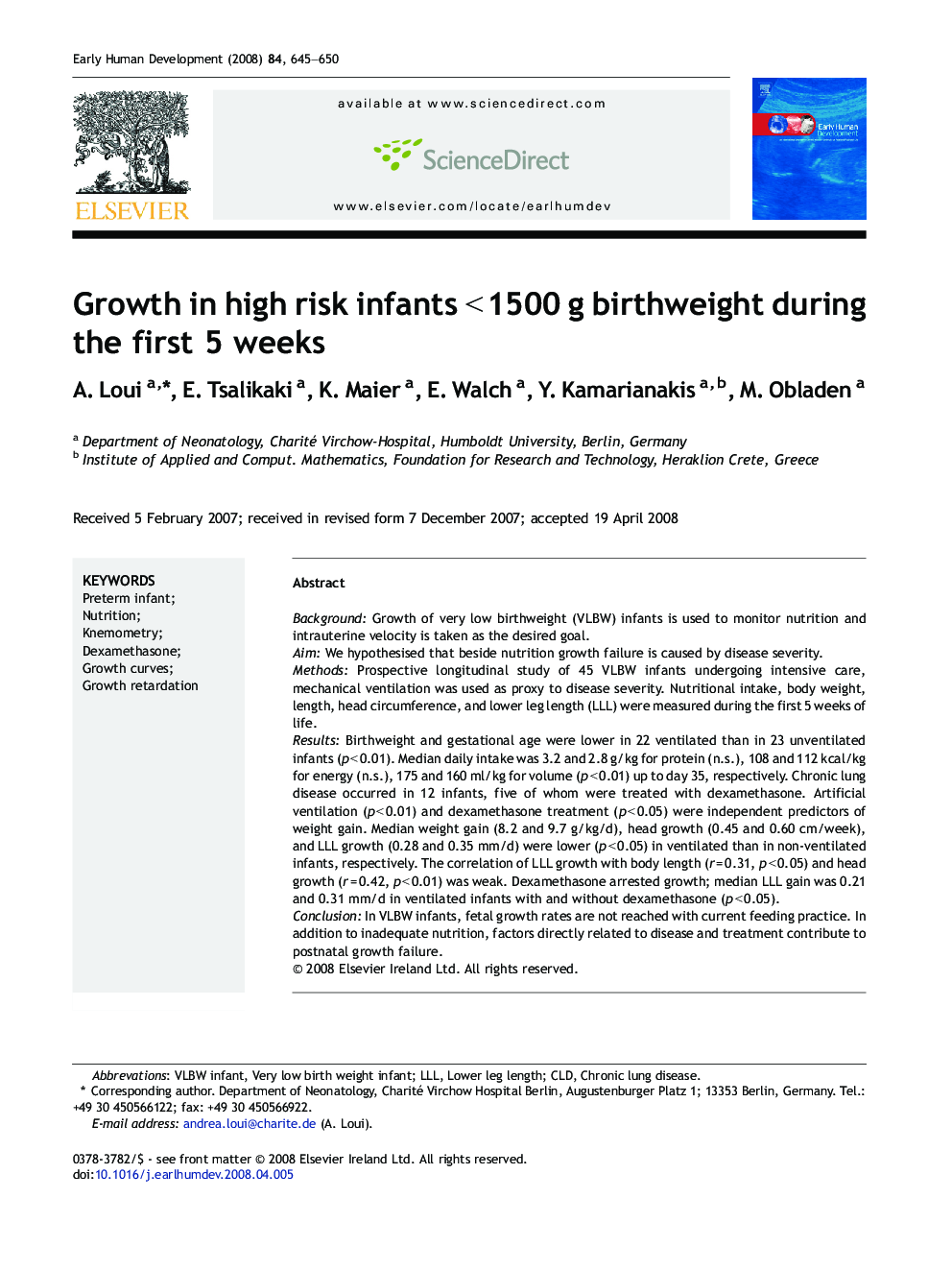| Article ID | Journal | Published Year | Pages | File Type |
|---|---|---|---|---|
| 3918099 | Early Human Development | 2008 | 6 Pages |
BackgroundGrowth of very low birthweight (VLBW) infants is used to monitor nutrition and intrauterine velocity is taken as the desired goal.AimWe hypothesised that beside nutrition growth failure is caused by disease severity.MethodsProspective longitudinal study of 45 VLBW infants undergoing intensive care, mechanical ventilation was used as proxy to disease severity. Nutritional intake, body weight, length, head circumference, and lower leg length (LLL) were measured during the first 5 weeks of life.ResultsBirthweight and gestational age were lower in 22 ventilated than in 23 unventilated infants (p < 0.01). Median daily intake was 3.2 and 2.8 g/kg for protein (n.s.), 108 and 112 kcal/kg for energy (n.s.), 175 and 160 ml/kg for volume (p < 0.01) up to day 35, respectively. Chronic lung disease occurred in 12 infants, five of whom were treated with dexamethasone. Artificial ventilation (p < 0.01) and dexamethasone treatment (p < 0.05) were independent predictors of weight gain. Median weight gain (8.2 and 9.7 g/kg/d), head growth (0.45 and 0.60 cm/week), and LLL growth (0.28 and 0.35 mm/d) were lower (p < 0.05) in ventilated than in non-ventilated infants, respectively. The correlation of LLL growth with body length (r = 0.31, p < 0.05) and head growth (r = 0.42, p < 0.01) was weak. Dexamethasone arrested growth; median LLL gain was 0.21 and 0.31 mm/d in ventilated infants with and without dexamethasone (p < 0.05).ConclusionIn VLBW infants, fetal growth rates are not reached with current feeding practice. In addition to inadequate nutrition, factors directly related to disease and treatment contribute to postnatal growth failure.
